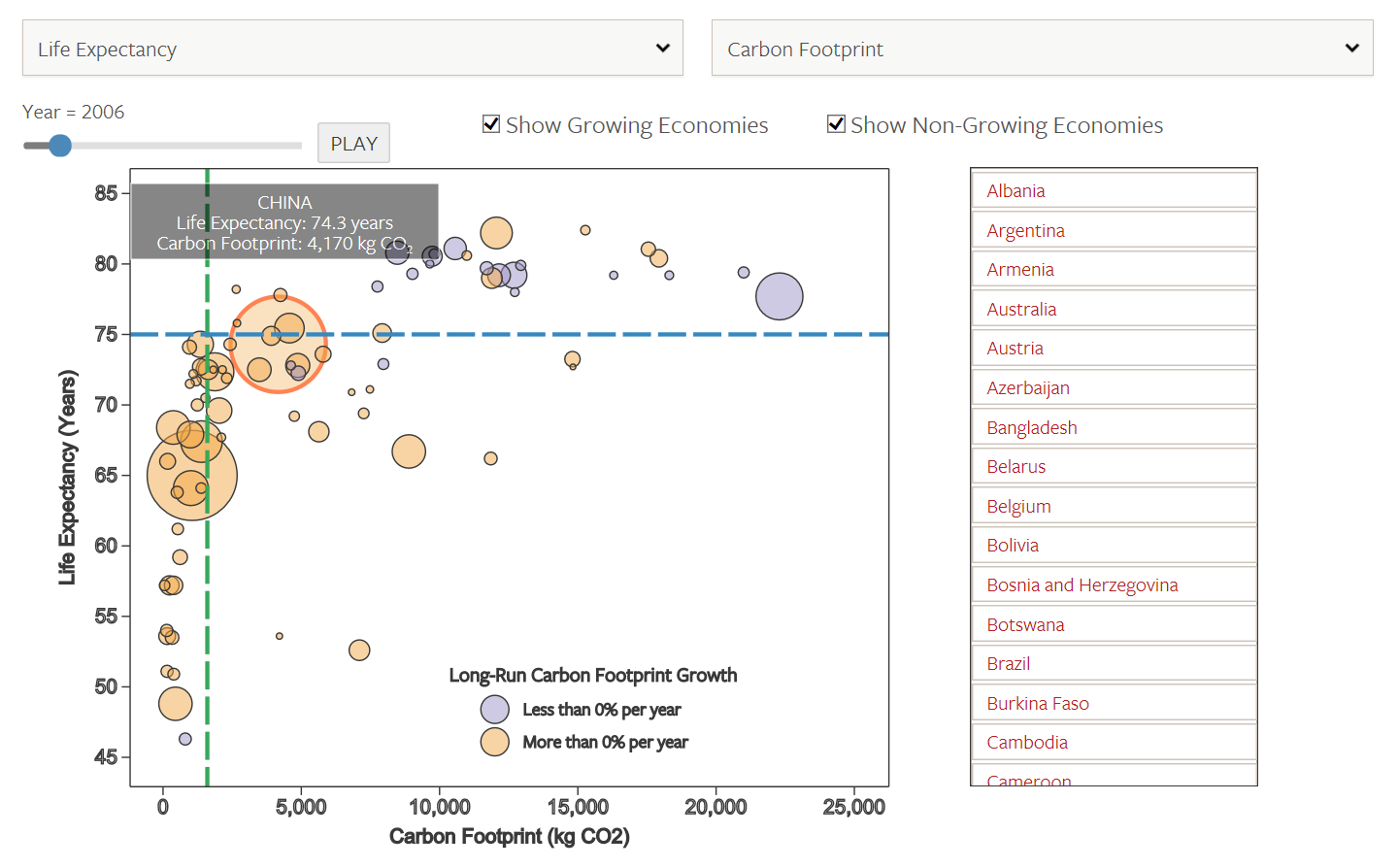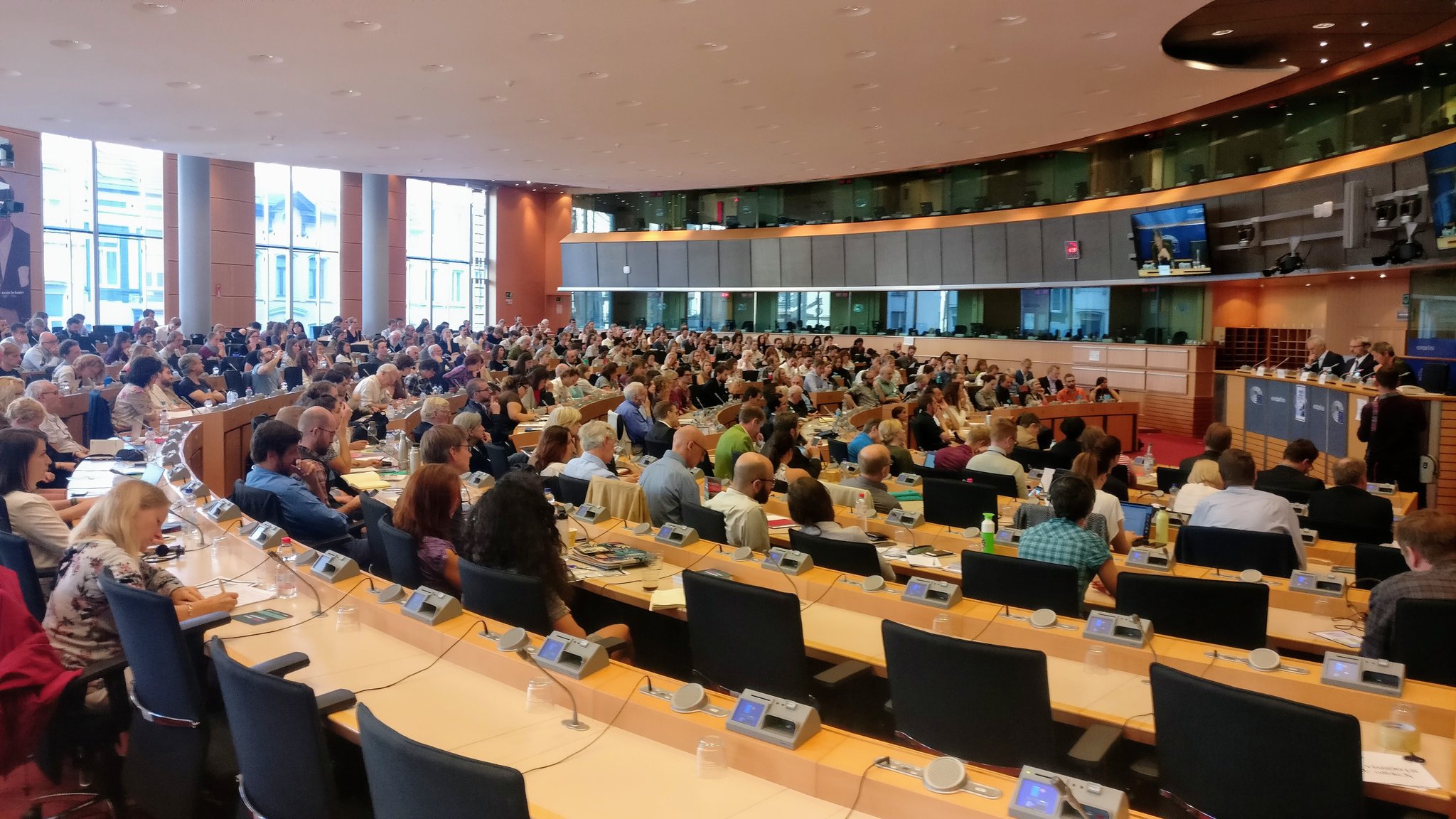By Andreas Roos
“The great economic revolutions in history occur when new communication revolutions merge with new energy regimes”. This is the beginning of an article by Jeremy Rifkin in the Guardian back in 2011, echoing the promise he laid out in his then newly written book The Third Industrial Revolution: How Lateral Power is Transforming Energy, the Economy, and World. The book claims, in short, that the world is entering the third and final stage of the industrial enterprise, a stage in which renewable energy is merging with information and communication technologies, and leading humanity into an era of wealth and harmony.
The book and its tenets have since become a major influence in how some choose to approach the broader issues of technology, social justice and environmental problems. Trusting - to a large extent - that modern technology will save the day.
As I will argue, the struggle for dominion over the digital economy and the real costs of installing renewable energy systems provides evidence that Rifkin’s book should be seen less as a scientific explanation of the contemporary movements of our time, and more as a story sustaining the principally western derived ideas of growth and progress that have got us into this mess to begin with.
Rifkin’s book provides a confused understanding of the industrial revolution(s). An explanation of this central concept is largely missing, apart from pointing out that the industrial revolution took place as “new communication technologies” were merging with “new energy regimes”. We should be open to this prospect, but he provides no historical evidence to support it.
A more convincing understanding, developed by leading environmental historians, has shown that it was the unequal exchange of land and labour embodied in traded resources that generated revenue for the expansion of the technological infrastructure in Europe. The new technological infrastructure, in turn, provided the means for further appropriation — and so allowed for industrialism to emerge in a kind of feedback loop.
The same processes of unequal exchange, appropriation and accumulation remain today as a foundation for industrialism and the modern economy. Indeed, it is not hard to see, once we care to look, that the global wealthy owe their technological infrastructure to the labour time, the resources and the land of the global poor.
This way, capitalism, development and industrialism are intrinsically linked to social and environmental injustice. Renewable energy systems and new communication technology do not constitute a ‘third industrial revolution’, as Rifkin claims. They are part of a new era in an ongoing and historical capitalist economy of industrialism founded upon the unequal exchange of labour and land.
One of the more puzzling ideas repeatedly expressed by Rifkin is that renewable energy systems are “ample, found everywhere” and “for the most part, free”. This is simply not true.
It is true that the sources of energy (such as wind, sunshine and streaming water) are found mostly anywhere, but it is a significant leap to claim that the technologies and the infrastructure they require are therefore also to be found everywhere. Renewable energy systems, as technologies, require a great deal of labour, land and resources, and should therefore be expected to appear in the hands of those who have the means to access these prerequisites. In short, renewable energy systems are reserved for the global wealthy.
Today’s ecological economists base much of their understanding on the laws of thermodynamics, specifically so the second law of thermodynamics, the law of entropy. One of the more famous of these economists were Nicolas Georgescu-Roegen who in his The Entropy Law and the Economic Process (1971) showed how economic activity at the same time increases utility and energy dissipation (entropy). It is curious that Rifkin should acknowledge the positive correlation between monetary profit and energy dissipation, yet endorse the prospect that “for every dollar invested in energy efficiency and/or renewable energy systems, the return on investment would be $1.80”. Isn’t the point that these technologies should capture energy, rather than dissipate it?
The amount of energy that is captured by these technologies must ultimately be put in relation to the expenditures they require in their creation and maintenance, distributed or not. As far as we know, renewable energy systems cannot be decoupled from fossil fuel intensive industries, nor for that matter from extractive industries, land requirements and labour. To account for all these expenditures is possible, but notoriously tricky, and the question remains whether renewable energy systems will still be portrayed as environmentally sustainable in the future.
This also suggests that the installation of renewable energy systems is a matter of economic growth and a means to fuel the capitalist economy at the expense of the natural world. This notion is supported by recent attempts at installing renewable energy systems, for example the desertec project, where installations have failed as big business has withdrawn.
Over the last year and a half I have been engaged in research concerning the combined social-ecological effects of communication technologies and the internet. If there is one thing I’ve learned, it’s that the digital economy is a field of political struggle between financial capital and civil society (the sum of common users of the internet), and that this struggle to a large extent determines the social and ecological impacts of communication technologies.
The fact that big financial corporations are domineering the digital economy has serious repercussions for the collaborative and environmental prospects of communication technologies and the internet. Civil society is cradled in a comfortable space permeated by profit seekers and a growth economy, and many people are, in effect, kept from realising the truly revolutionary potential of communication technologies.
While communication technologies have the very real potential of fostering a digital space of lateral power, the issue remains that the attention (or labour time) of common users is more or less locked-in by the big players. This is true among most all areas of modern life, yet it is more obvious for hackers and digital activists who remember a recent past of democratic collaboration in the early ages of the internet.
On another level, the communication technologies in question are reliant upon an infrastructure which—similarly to renewable energy systems—requires a great deal of land, resources and labour to exist at all. The digital divide remains as a reminder, in the light of this, that communication technologies too are reserved for the global wealthy despite being celebrated for their rapid permeation.
There is a widely held perception that the social and ecological costs of renewable energy systems and communication technologies will be mitigated by the new opportunities for social and ecological organisation that they facilitate. This is the core sentiment of Rifkin’s book, and admittedly, it is alluring.
From such a perspective distributed renewable energy systems will cancel out the need for fossil fuel intensive industries, and communication technologies will provide an ideal infrastructure for social collaboration and sharing.
If, on the other hand, we realise that the notion of sharing and market failure goes against the very logic of capitalism, and against current dynamics of power within the digital economy, we can’t help but to avoid these conclusions. A more reasonable explanation for the recent proliferation of renewable energy systems and communication technologies is that they provide a means for capitalism to expand. As such, they are first and foremost new global markets, as opposed to an economic revolution.
There is a big difference between a new market and an economic revolution. In fact, they are the very opposite of one another.
I do not doubt that what Rifkin ultimately predicts may come true: distributed renewable energy systems may very well be merging with new communication technologies, and creating a new way of conducting economic activity. We must, however, be aware that this will not be the reality for everyone, and that this will not be in the interest of mother earth and humankind as a whole.
For the global poor the ‘third industrial revolution’ will remain a dream that is fiercely endorsed by the global wealthy. In its progressive shadow the poor will continue to mine, assemble and labour under slave conditions in the hope that their children will someday be wealthy too. Though it will more likely be phrased as providing jobs to an “underemployed underclass”, or as “leapfrogging” through “micro loans”, which is how Rifkin puts it. This is a system of coercion which is, and has always been, a perquisite for capitalism and growth.
Thus capitalism may renew itself, providing labour intensive jobs to the global poor and distributing energy, 3D printers and goods for all (who can afford!). Meanwhile, increasing extraction of raw material, increasing consumption of luxury goods, increasing greenhouse gas emissions, and all the things we should address by decisive means, goes by unnoticed.
What makes suggestions such as Rifkin’s popular, I think, is that they seem to hold answers that carry with them very few repercussions for the life of the global wealthy, or for the global middleclass. It requires no big effort to effectively endorse the dominant forces of the digital economy, nor to buy solar panels. But does this really constitute an economic evolution? I think Rifkin ultimately knows the answer to this himself, which is why the last chapters of his book are radically different from the rest of the book.
In the last chapters of his book he deals with “biosphere consciousness”, “biophilia” (a love and deep connection to other living systems) and issues associated more with ecological education. In these chapters I do sympathise with him. It is only by rethinking the system—and in effect what we teach our children about nature, about each other, and about justice—that may change things fundamentally and in the long term. This, however, must then also include the understanding of modern technology as social relations—in need of inequality to exist in a world economy perpetually renewing unsustainable growth. This realisation is a sure basis for the beginning of a real economic revolution.

Ten years ago G20 leaders committed a staggering $5 trillion of public funds to rescue the banks and restore growth during the largest economic contraction in modern times. The economies of an unprecedented number of countries — and their associated environmental footprints — experienced very low growth over the decade that followed. In a recent study published in the Journal of Cleaner Prod...

This and many other questions around European politics were discussed at the first Post-growth conference, which took place at the EU Parliament on September 18 and 19. Hosted by ten Members of the European Parliament (MEPs) from five party families, it attracted around 600 people to Brussels. Through panel (and solely panel) discussions, they engaged in debates around economic models, technolo...
By Fabian Scheidler In the face of climate change, financial crises and mass poverty, a growing number of people agree that we need a fundamental social-ecological transformation that includes all areas of society. Luckily, a huge variety of concepts and practices for such transformation already exists. These, however, have not yet been able to leave their niches. Why is this so difficult? Are...